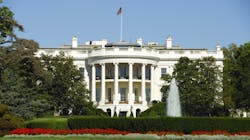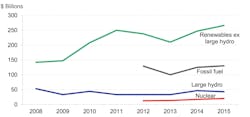Update: Machine Design reached out to Josephine Zurica, a professional engineer with Dagher Engineering Principal with a Bachelor’s degree in mechanical engineering and a Master's degree in environmental engineering, about the impact that climate change has on engineering design considerations. "Depending on their type of work, an engineer may have a unique ability to have a substantial positive or negative affect on climate change." She goes on to mention that climate change has affected the energy and HVAC industry. The introduction of new required energy codes and optional certification programs like LEED and Passive House have helped in the design of more energy efficient buildings and HVAC systems. Zurica states that " As recently as 10 years ago there was no enforcement of the minimal energy codes that were in place. Now the code is significantly more robust and strictly enforced. It is a step in the right direction." Engineering products and designs can directly impact the environment. As such, the topic of climate change is essential in the discussion in the future of the engineering profession.
In one of Donald Trump’s first actions as President, moments after he was sworn in as president, the White House’s climate change page was deleted. It was replaced with a plan that re-emphasizes American fossil fuel extraction and lacks strategy to continue to diversify the global energy production. It also fails to develop strategies that mitigate the predicted harm that the overwhelming majority of climate scientists agree will result from fossil-fuel centric energy policies like the one outlined. For reference, here is the old page to combat climate change from the Obama Administration, which was deleted this afternoon.
Specifically, the outline for the “America First Energy Plan” includes “unleashing America’s $50 trillion in untapped shale, oil, and natural gas reserves” to reduce dependence on foreign oil. This could lead to more drilling and pipeline construction across the U.S. The new plan promises to eradicate regulations placed on factories through the Climate Action Plan (CAP) and the Waters of the US rule to create more factory jobs in the U.S. It promises to support research for, what are referred to as, clean coal technologies, but does not mention funding for technologies in renewable energy. All of this despite a global trend in the opposite direction. Other nations continue to innovate with alternative energy, decrease their appetite for dirtier energy sources in favor of greener, renewable energy; business leaders and investors continue to move away from the fossil fuel industry (graph, above). The plan description concludes with the vague promise to refocus the EPA on its mission to protect clean air and water.
Donald Trump doesn’t believe in climate change. In 2012, he tweeted that “The concept of global warming was created by and for the Chinese in order to make U.S. manufacturing non-competitive.” Last week, Scott Pruitt, his choice for head of the Environmental Protection Agency announced his views that climate change is indeed real, but not necessarily an effect of human action, despite empirical evidence provided by climate scientists that it is.
A statement from the American Meteorological Society says, "It is clear from extensive scientific evidence that the dominant cause of the rapid change in climate of the past half century is human-induced increases in the amount of atmospheric greenhouse gases, including carbon dioxide (CO2), chlorofluorocarbons, methane, and nitrous oxide." (2012)7
NASA's page for causes of climate change states, "Over the last century the burning of fossil fuels like coal and oil has increased the concentration of atmospheric carbon dioxide (CO2)". A graph from the EPA shows the increase in greenhouse gas emissions since the industrial revolution (above, left).
About the Author
Leah Scully
Associate Content Producer
Leah Scully is a graduate of The College of New Jersey. She has a BS degree in Biomedical Engineering with a mechanical specialization. Leah is responsible for Machine Design’s news items that cover industry trends, research, and applied science and engineering, along with product galleries. Visit her on Facebook, or view her profile on LinkedIn.



